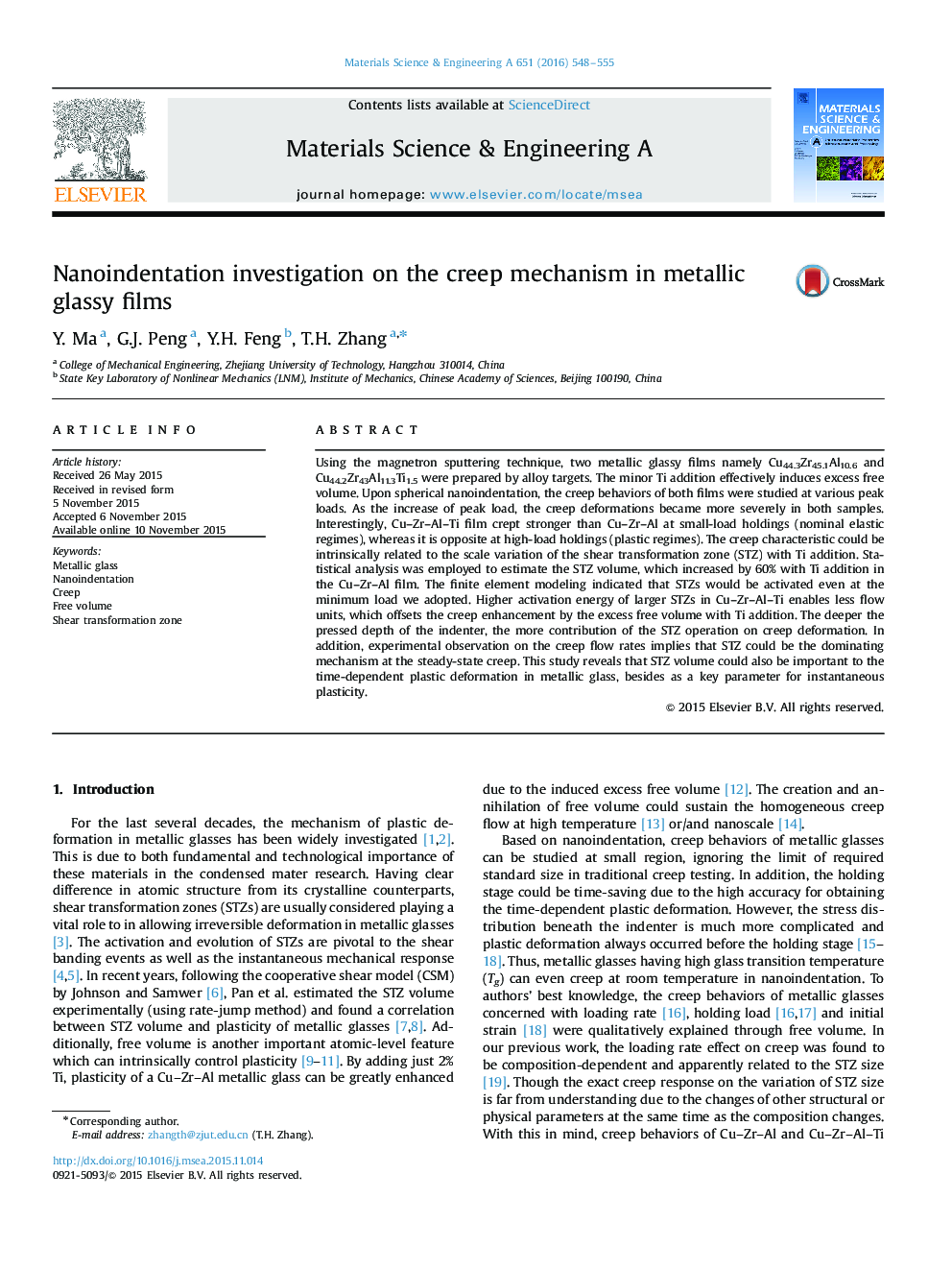| Article ID | Journal | Published Year | Pages | File Type |
|---|---|---|---|---|
| 7976097 | Materials Science and Engineering: A | 2016 | 8 Pages |
Abstract
Using the magnetron sputtering technique, two metallic glassy films namely Cu44.3Zr45.1Al10.6 and Cu44.2Zr43Al11.3Ti1.5 were prepared by alloy targets. The minor Ti addition effectively induces excess free volume. Upon spherical nanoindentation, the creep behaviors of both films were studied at various peak loads. As the increase of peak load, the creep deformations became more severely in both samples. Interestingly, Cu-Zr-Al-Ti film crept stronger than Cu-Zr-Al at small-load holdings (nominal elastic regimes), whereas it is opposite at high-load holdings (plastic regimes). The creep characteristic could be intrinsically related to the scale variation of the shear transformation zone (STZ) with Ti addition. Statistical analysis was employed to estimate the STZ volume, which increased by 60% with Ti addition in the Cu-Zr-Al film. The finite element modeling indicated that STZs would be activated even at the minimum load we adopted. Higher activation energy of larger STZs in Cu-Zr-Al-Ti enables less flow units, which offsets the creep enhancement by the excess free volume with Ti addition. The deeper the pressed depth of the indenter, the more contribution of the STZ operation on creep deformation. In addition, experimental observation on the creep flow rates implies that STZ could be the dominating mechanism at the steady-state creep. This study reveals that STZ volume could also be important to the time-dependent plastic deformation in metallic glass, besides as a key parameter for instantaneous plasticity.
Related Topics
Physical Sciences and Engineering
Materials Science
Materials Science (General)
Authors
Y. Ma, G.J. Peng, Y.H. Feng, T.H. Zhang,
